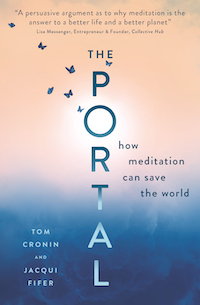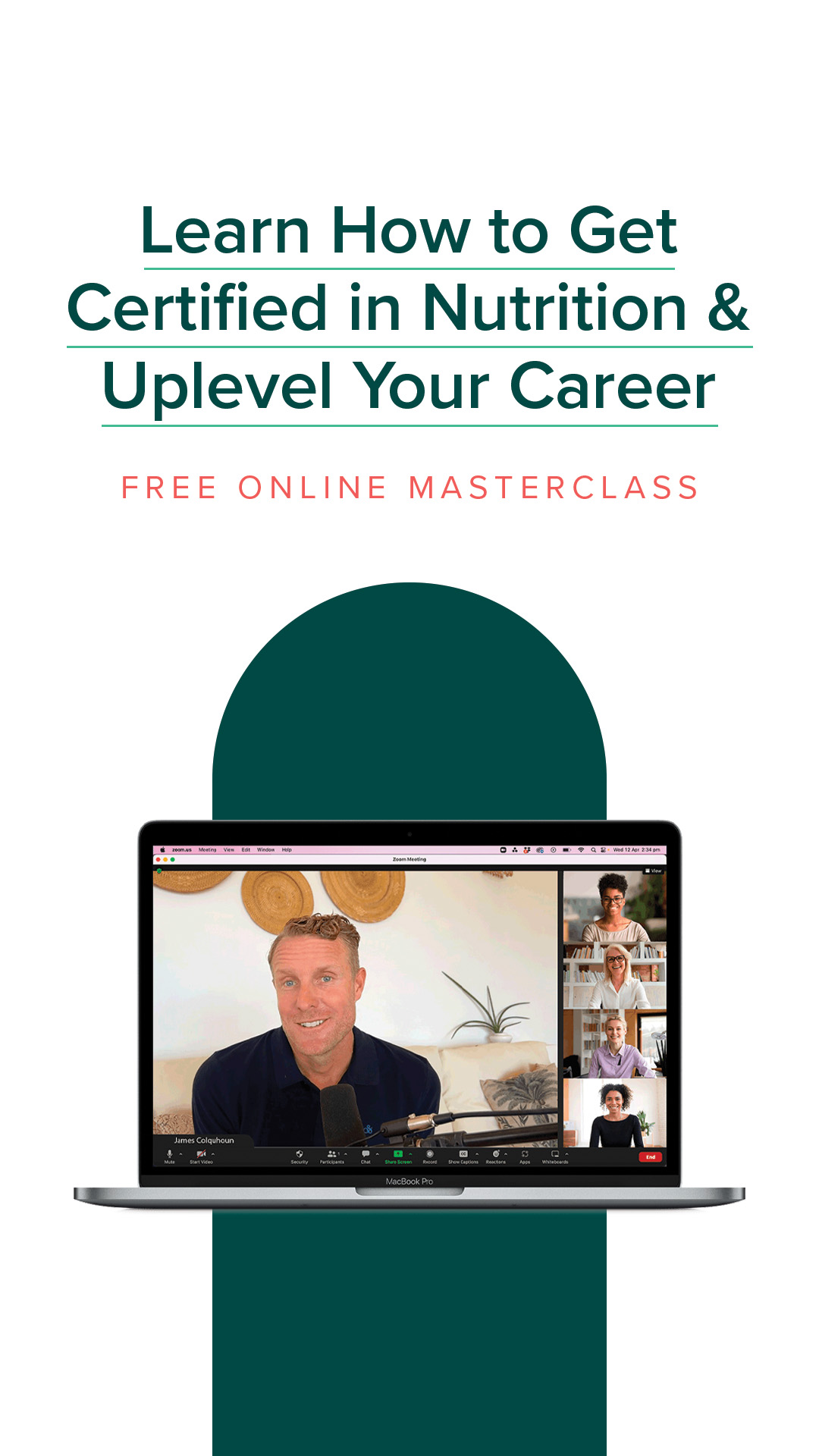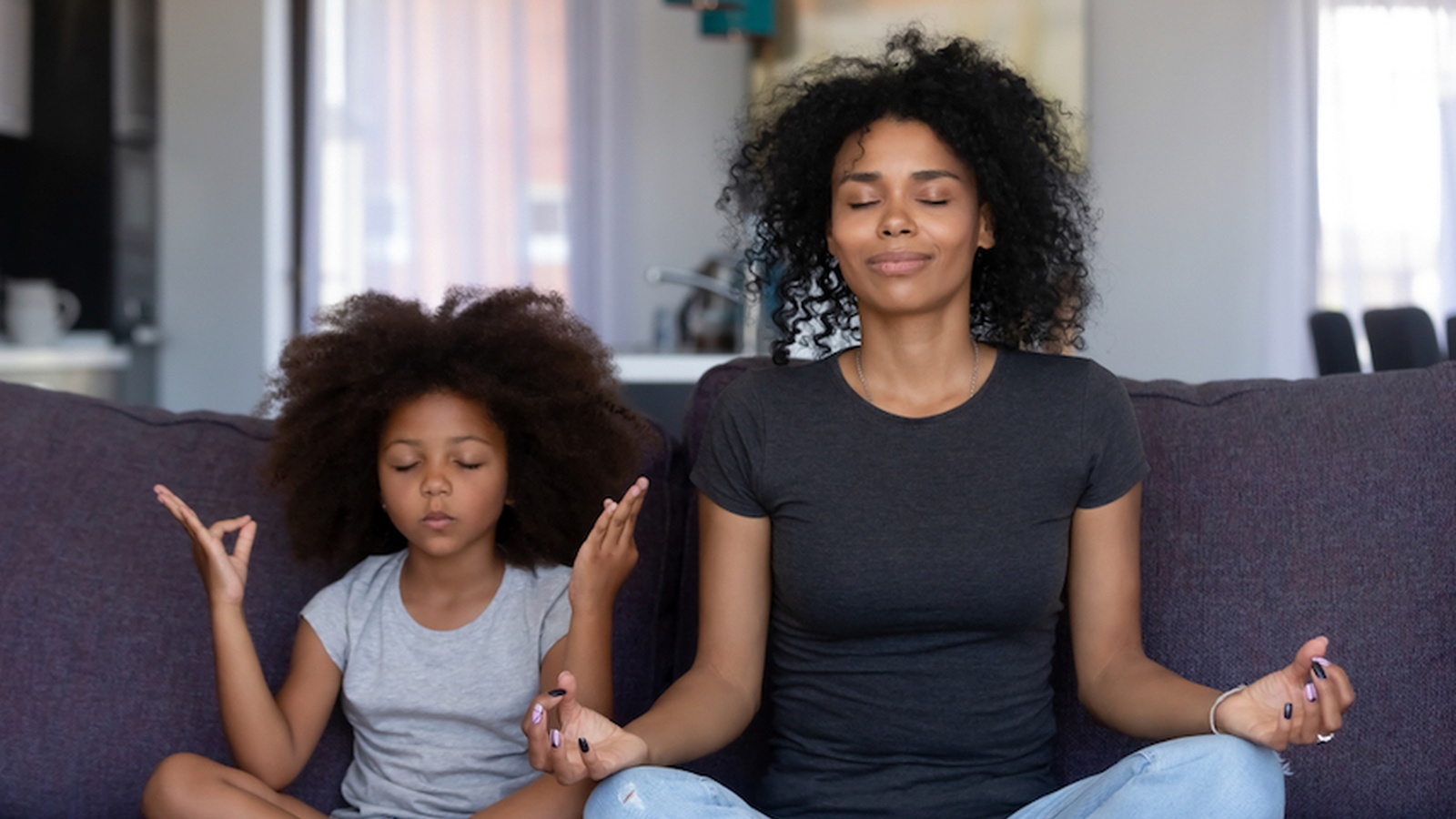3 Types of Meditation and Why You Should Try It
Meditation has been around for thousands of years. It's an incredible and profound tool, and what it does is it directs and refines human attention. Begin to understand the practice in this short extract from Tom Cronin's new book.
Meditation is no different from our phones, our social media or even our problems. All of these are pulling our mind’s attention in a particular direction. However, where meditation differs is that it redirects our attention from the outer world to the inner world. From the moment we’re born, our mind projects externally to the world around us, processing information each and every day. As we consume this information, it starts to form our identity, as we saw in the stories throughout the book. From an early age, each of our experiences starts imprinting on us and, before long, our malleable brain has been coded by these experiences, which stick with us as we set off on our life course.
When we begin meditating, we reverse the direction of the mind’s attention and move it inwards. This is not the natural direction for the mind to move. The mind is constantly seeking stimulation, and thinking about the world around us creates excitement for the mind that’s remarkably charming. The outer world is full of all sorts of glamorous and exciting propositions for the mind, so why wouldn’t it want to move in that direction? Each thought triggers a sensation shift in the body, and this feeling in the body is a fluctuating pleasure-pain dynamic. Some thoughts trigger pleasurable sensations and some thoughts trigger painful sensations. The mind isn’t concerned whether it’s pleasurable or painful, it’s only seeking excitation of some sort. We move up and down through these peaks and troughs throughout our waking day.
When the mind goes inwards, to the inner silence, beyond thought, a de-excitation occurs. Deepak Chopra, a bestselling author, doctor, speaker, and meditation expert says, ‘Meditation is not a way of making your mind quiet. It’s a way of entering into the quiet that’s already there—buried under the 50,000 thoughts the average person thinks every day.’.⁹ As the mind moves away from the thoughts and into that quiet, we experience a restfulness in the body. This reduced stimulus of the mind translates to reduced stimulation of the body and a physiological and mental state of rest is achieved. One of the great challenges with embracing a daily meditation practice is how much we are drawn to the state of excitation by the outer world.
Catching up with friends, going to the movies, making money, reading emails and scrolling through social media feeds are all highly stimulating things that few people have the inclination to turn their backs on in order to explore their inner world. What is compelling people to look inwards today is a need, a deep need, to take time out and recover from the overloading effect that this ever-increasing demand from technology and information is having on our minds and bodies? There has been a huge increase in anxiety and depression in the modern world, especially among teenagers as they grapple with a new era of social media. Marco Grados, an associate professor at Johns Hopkins Hospital, comments on the effect social media is having on young people: ‘It’s all about the self-image: who’s “liking” them, who’s watching them, who clicked on their picture.
Everything can turn into something negative. Kids are exposed to that day after day, and it’s not good for them.’.⁰ Meditation works on a number of levels but, first and foremost, it’s incredibly effective at shifting the body out of a sympathetic nervous system state, otherwise known as the fight or flight response in the body, and into the calming, healing parasympathetic nervous system, also known as the rest and digest state. When the body goes through this shift, incredible changes take place. Instead of pumping cortisol and adrenaline into the blood, the body starts releasing: melatonin (to help us sleep), serotonin (which makes us feel happy) and oxytocin (which induces feelings of love). Our brain functionality improves as we experience a whole-brain coherence, and our body starts restoring balance through the deep rest that results from a still mind. The benefits of meditation are vast, ranging from reducing anxiety, cholesterol levels, blood pressure, and adrenal fatigue, to healing depression, improving sleep and slowing the effects of aging, among many, many other benefits.
Many people struggle to find the time to meditate because they feel they could be ‘doing so much more’ than sitting in stillness with their eyes closed. Everything we do is inspired by the quest to be fulfilled; it drives every action, whether it’s cleaning the bathroom floor, going to a rock concert, sleeping or meditating in a monastery in Tibet—it’s all a search to find fulfillment.
So, with that in mind, the question is, are you fulfilled? Are you living healthily, happily, full of lightness and joy?
The price we pay for ‘doing more’ and ‘getting more’ is that we get stressed, anxious, tired and unwell. Seeking fulfillment from the outer world will give us small doses at times, but it also leaves us disappointed and wanting more. No doubt you’ve heard the saying ‘Do less, achieve more’; well this also applies to meditation. By sitting in stillness, we rest our mind and body and begin to restore balance. I recommend you do your own research and find out for yourself by trying it. What is life like if you meditate once in the morning and once in the afternoon? What is life like if you meditate once a day?
What is life like if you don’t meditate at all? This is a great experiment and one I highly recommend. Try this for a few weeks and assess the results. When I learned to meditate and the teacher suggested two sessions a day for 20 minutes, I nearly fell off the chair—there was no way I would be able to fit that in. But I set about finding a way to make it work. I realized my day consisted of 72 segments of 20 minutes, and each one of those had been allocated to me for seeking fulfillment. Yet I was miserable, anxious and stressed. So I decided to set aside
two blocks of 20 minutes, which still left 70 to do all the things I wanted to do in my day. It was ample time. So if you’re struggling to fit meditation into your day, just break it down like this. And if it’s going to be a 10-minute meditation, then you still have 143 segments of 10 minutes left in your day to find fulfillment in other areas. To help you incorporate meditation into your day, I’ve mapped out some steps. First, some tips on how to prepare for your meditation, then some simple meditation techniques that will help you get started.
PREPARING FOR YOUR MEDITATION PRACTICE
Sit comfortably in a chair. If you’re extremely flexible and it suits you, you can try sitting in a cross-legged or lotus position, but this isn’t essential at all. I recommend being as comfortable as possible in your meditation, and so a padded lounge chair with a back on it is a great place to start.
Allow 10–20 minutes for your meditation practice. Of course, you can do it for five minutes or even one minute, but to start noticing more of the effects, 10–20 minutes is ideal. Find a place where you won’t be disturbed and there’s as little stimulus for your senses as possible. If there’s wind, hot sun, background noise, flies or other insects, you’ll find that your attention is drawn to the senses, which are processing that information of the outer world, and this will pull you out of your meditation. Remember, we’re going inwards here and the senses move outward, so a space that has as few stimuli as possible will be better for your senses getting started. This isn’t a rule; I’ve meditated on train stations during peak hour and still found inner peace.
Use a timer or watch to track your time. This will allow you to surrender to your meditation so that you won’t have to keep opening your eyes to check the time. However, the sound of the timer notifying you when your time is up may cut off a deep meditation if you’ve dived into a quiet place. It’s up to you. If you have time and don’t need to restrict yourself, then you can luxuriate into a long meditation and, if you need to peek one eye open to check the time, then you can do this. Otherwise, set your timer for the desired time and surrender to your meditation.
Turn your phone to airplane mode or turn it off completely. Even if your phone is on silent, it may still cause a pulling effect on your mind as you feel drawn to engage with your phone. Our phones are designed to hold our attention, so shutting it down completely will liberate the mind from wandering in that direction.
Setting up your space can be a nice ritual. It’s not essential and I don’t want to promote the idea that you need the paraphernalia to meditate. Ideally, we should be able to meditate anywhere and anytime, but when we have a nice space set aside for meditation and it’s a space we go to regularly for stillness, the body will appreciate and recognize this process and start the meditation experience even before you’re meditating. This may sound strange, but think of how you feel before you get on a roller-coaster ride. Already, your heart is beating faster and adrenaline is moving through your veins. This also happens in the opposite way when we’re lighting a candle, burning incense, wrapping a shawl around our shoulders and fluffing the pillows on the chair: the body is sensing that the process of meditation is impending and it starts to de-excite before the meditation. So if you have a room set up for your meditation and a ritual to go through beforehand, this can help you prepare.
Now that we’ve prepared our meditation space, it’s time to meditate. There are many different styles of meditation, just as there are different styles of food for different tastes.
To simplify things, I’ve made three categories: Concentration meditation, Contemplation meditation, and Transcending meditation.
1. CONCENTRATION MEDITATION
Concentration meditation is when we focus the mind on one still point. This may be uncomfortable and challenging, as the mind won’t want to do this, but with discipline and practice, you’ll be able to maintain more control over your mind.
Step 1) Close your eyes.
Step 2) Observe the simple, natural breath moving in and out of your body. It’s unforced and effortless.
Step 3) As the air moves in and out of your body, observe it passing through your nostrils. As it moves through your nostrils, move your attention even closer still to the cooling skin around the rim of your nostrils.
Step 4) Keep the attention on this single point of the cooling skin around the rim of this nostril. As your mind moves away to other things, continue to bring it back. It’s okay for your mind to move away from the single point; the key to this meditation is to keep bringing it back.
Step 5) Keep this focus for a minimum of 10 minutes. In time, if you wish, you can build it up to 20 minutes or longer.
As you can see, this is a very simple breath meditation. There’s one thing we can rely on while we’re alive, and that’s for our breath to be there night and day. Buddhist monk Ajahn Amaro once quoted his master Ajah Chah saying, ‘If you have time to breathe, you have time to meditate. You breathe when you walk. You breathe when you stand. You breathe when you lie down.’.⁹
2. CONTEMPLATION MEDITATION
Contemplation meditation is a technique where we’re guiding the mind to a particular place. Usually, our mind is fluctuating between 50,000–70,000 thoughts a day which are often random or negative, such as worry, regret, guilt or anger. In contemplation meditation, we’re going to be very specific about the nature of thoughts. It requires being proactive with your thinking mind rather than reactive. You can use a guide to help you move your mind in a particular direction, or you can do this yourself if you feel capable of it.
In this meditation, we’ll be moving our awareness to our heart space. There’s a saying: ‘Where the attention goes it grows.’ Very rarely do we place our awareness on the heart center and expand the feeling of inner love. Most of our lives we seek love from external sources, like other people, gifts or money. In this practice, we’ll start to give our internal love center some attention and, as a result, over time, you’ll experience more love within yourself.
Step 1) Sit in a chair comfortably and close your eyes.
Step 2) Take three deep breaths, filling your lungs and exhaling.
Step 3) Return to your natural breath and place your mind’s awareness into your chest cavity. Imagine a big spaciousness inside your chest.
Step 4) In the center of your chest, imagine now a golden ball of light, like an orb, the size of a grapefruit or softball. Feel the light and warmth and lovingness from that ball in the center of your chest. Keep your awareness on this ball of light for a few minutes, feeling it glow and radiate love and warmth in the center of your chest.
Step 5) Now imagine the radiance and warmth of this orb of light spreading down into your belly, filling up the entire space in your stomach and lower back.
Step 6) Observe now how this light of love and warmth spreads down through the hollowness of your right leg and then down through the hollowness of your left leg, until it fills both legs all the way to the tips of your toes.
Step 7) Bring your awareness back up to the orb in your chest spreading light and love up through your chest, into your shoulders and down through your right arm, then down through your left arm, filling both arms all the way to the tips of your fingers with radiant love and light.
Step 8) Now feel the light of the orb spreading all the way up through your neck into your headspace, filling your entire head with lightness, softness, and lovingness.
Step 9) Now your whole body is filled with light and love. You feel radiant, clear, light and warm with the glow of love. This is you, letting go of everything, and simply being filled with radiant loving light.
3. TRANSCENDING MEDITATION
Transcending meditation is a deep meditation that takes your mind beyond your thoughts. In this spaciousness, you’ll experience a stillness, quietness and presence that is the absence of thought.
This type of meditation uses mantras, which is a Sanskrit word that means ‘mind vehicle’. A mantra is something that guides or charms the mind into deeper states of awareness. Imagine the mind like the ocean.
On the surface, there are lots of waves and, as you go deeper, there’s less activity. This is like the mind. On the surface, there are thoughts, then as you go deeper into the field of the mind, there’ll be less mental activity. The mind doesn’t usually move in that direction, because it finds thinking on the surface very alluring. This is where the mantras come into play. They have the effect of charming the mind into deeper states.
This is a powerful meditation because when the mind goes into these states, the body goes into a profoundly deep state of rest that can start throwing off stresses. For this reason, I recommend finding qualified teachers in your area to guide you through this process and support you with your meditation practice. You can find many transcending meditation teachers by searching in your local area for transcendental meditation, Vedic meditation, primordial sound technique or the Art of Living centers.
These meditation techniques can start you on your journey through the portal into stillness. It’s in the stillness that we can move beyond our stories, our past, our future and discover the essence of who we are ... in our simplest form.
‘When people trust that their bodies can heal themselves, that their bodies can teach, and they can enter stillness, stillness is a wondrous state, and it touches a truth.’
If you are new to meditation or simply curious as to what others have experienced through this practice, we encourage you to watch On Meditation. This is a documentary that shares the first-hand experiences of some long-time meditators who have developed meaningful practices and are willing to share their experiences. From teachers to everyday people to celebrities, each person offers a rare glimpse into the private insights and rituals of their practice. Save your spot for our FREE ONLINE SCREENING EVENT here.
Images and Text from The Portal by Tom Cronin and Jacqui Fifer. Murdoch Books RRP $32.99 











